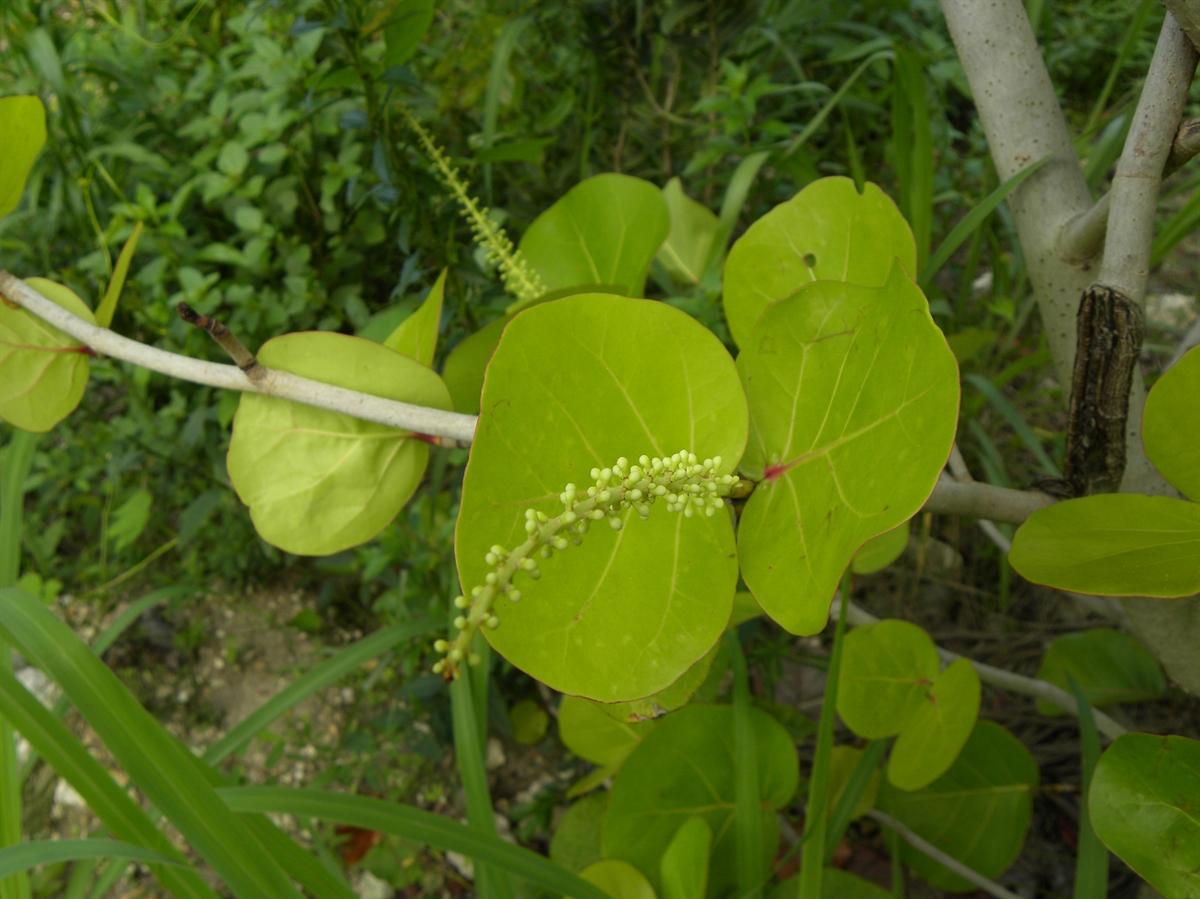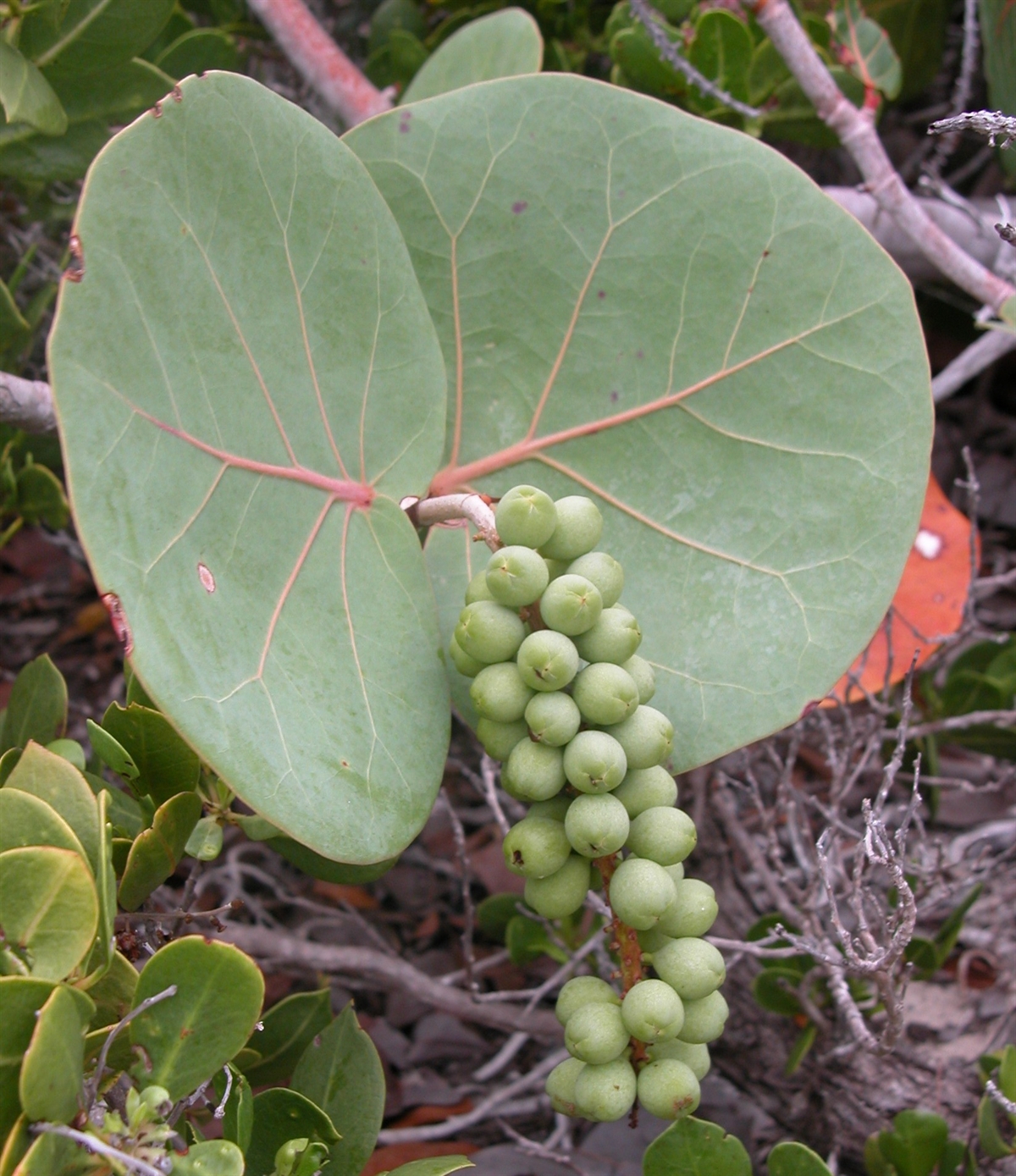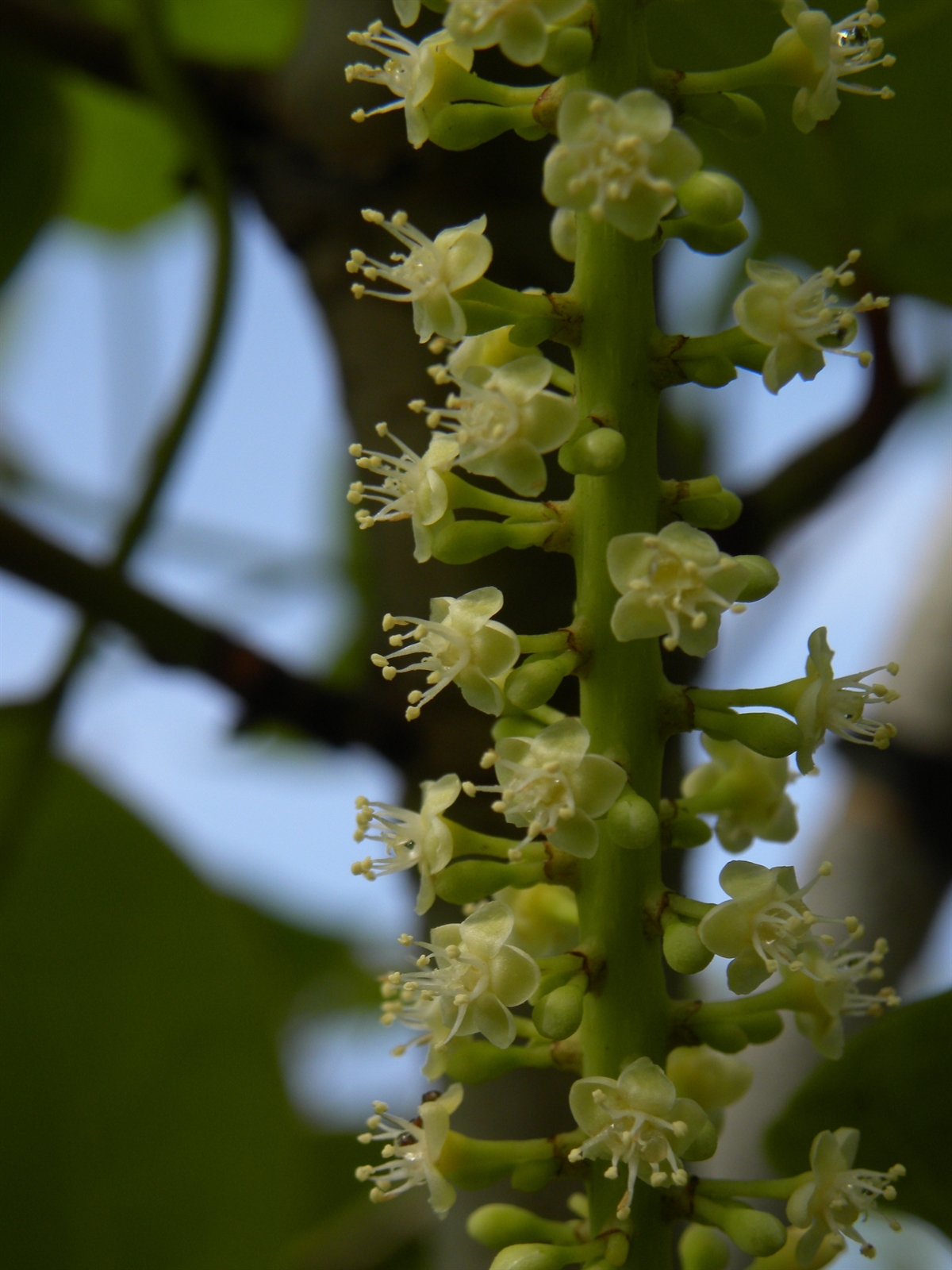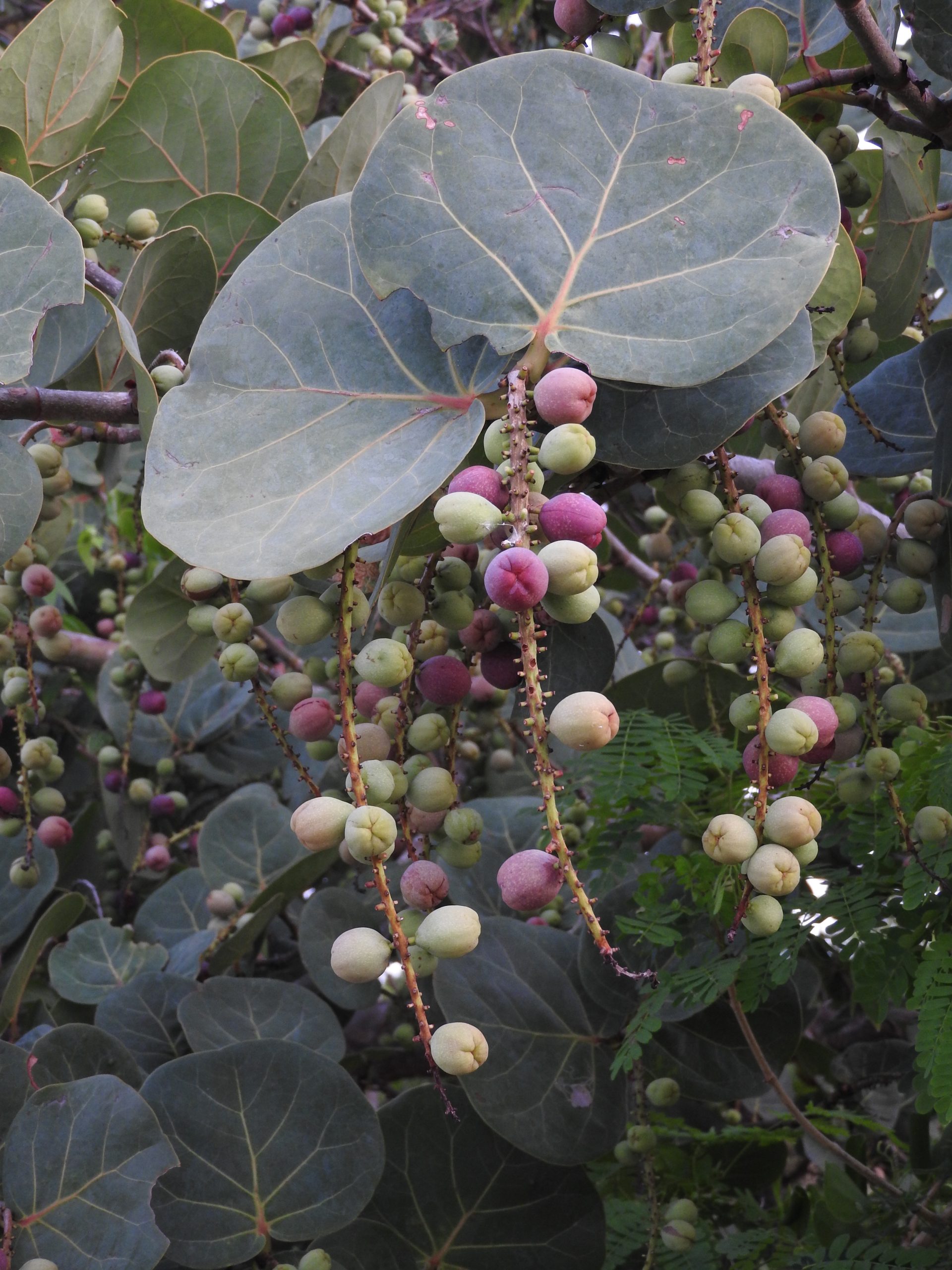Habit: Coccoloba uvifera grows as a low small shrub to large trees over 17 meters in height. The leaves are arranged alternately, to 25 cm in length, ovate to cordate to orbicular with a rounded leaf apex and entire margin. There is an ocrea extending from the petiole surrounding the stem above the node.
Coccoloba uvifera is dioecious. The incomplete, imperfect, actinomorphic flowers are arranged in racemes. The inflorescence is longer than the length of the leaves. The calyx has 5 green sepals. The corolla has 5 whitish petals. There are 8 stamens. In staminate flowers the stamens are fertile and are 3 times the size of the infertile ovary. In carpellate flowers the stamens are infertile and shorter than the ovary. In both types of flowers the calyx, corolla, and stamens are fused to form a shallow hypanthium. At the base of the hypanthium are nectaries. The ovary is superior with a single locule. The fruit is a drupe that turns reddish-purple at maturity and occurs in large long clusters.
Habitat: Coccoloba uvifera grows along shorelines in Dry Broadleaf Evergreen Formation –Shrublands (coastal coppice) as well as Rocky Shores and Dune systems.
Distribution: Coccoloba uvifera occurs on all island groupings within the Lucayan Archipelago as well as southern Florida, the Caribbean region, and tropical and subtropical Central and South America. It is now grown throughout the world.
Medicinal/Cultural/Economic usage: Coccoloba uvifera is used in the Bahamas to treat gastrointestinal problems. (A drink made from boiling all the parts of the plant together are used to treat diarrhea). The leaves can be used as a compress for boils. Putting the leaves on a person’s head is said to stop headaches.
The fruit is edible although slightly acidic. It has been used to make jams and jellies as well as wine. The sap has been used to produce a red dye and used in the tanning process. The wood has been used to make boats.



